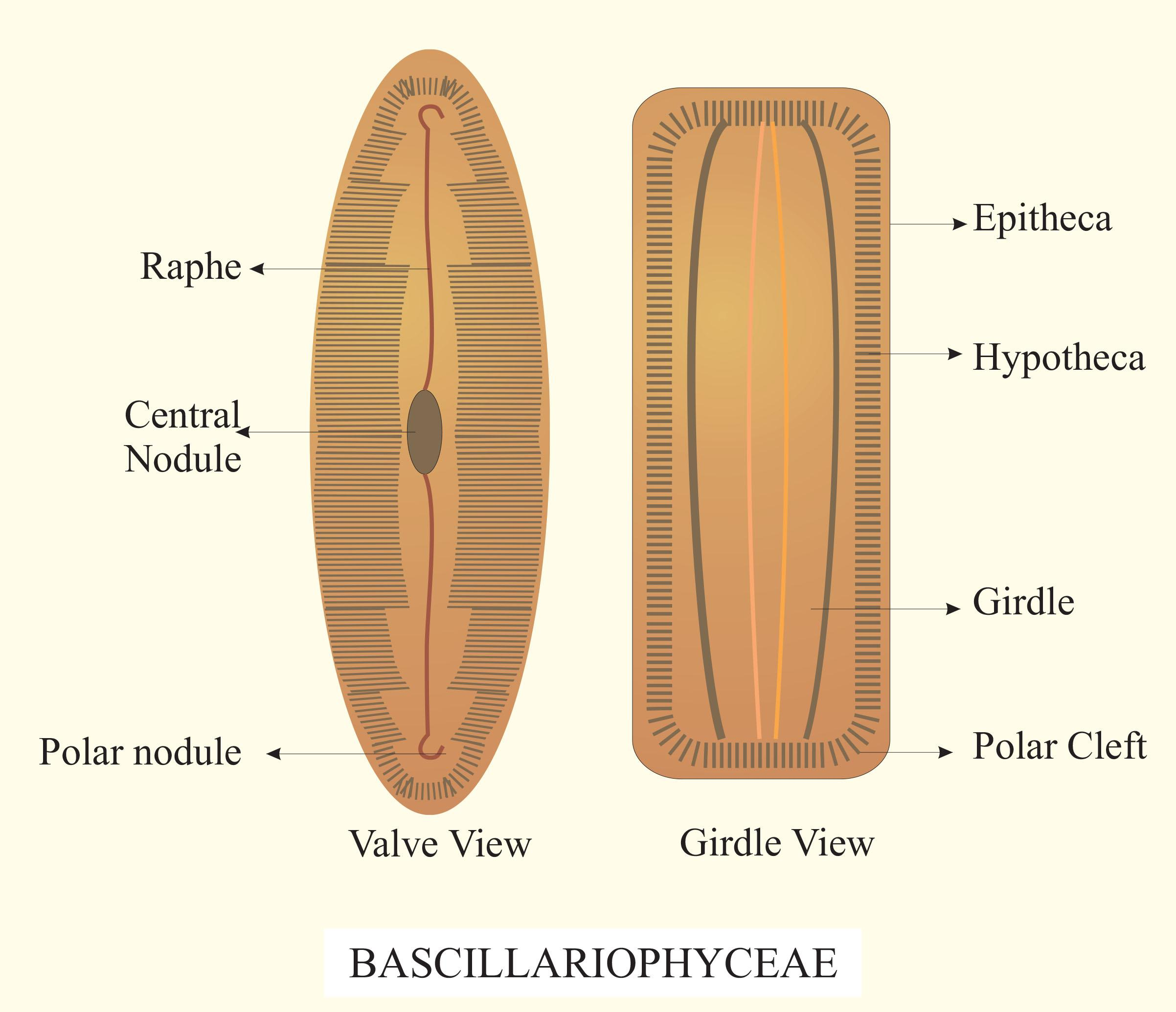
What is true of Bacillariophyceae?
(a) Epitheca is smaller.
(b) Hypotheca is smaller.
(c) Both epitheca and hypotheca have a small size.
(d) Any of the two can be larger
Answer
480.3k+ views
Hint: They are commonly unicellular and free-living but some members form colonies of various shapes like filaments, mucilaginous colonies, etc. Microscopic cells are of different shapes. They may be oval, spherical, triangular, boat-shaped, etc. The plant bodies are either bilateral or radial in symmetry.
Complete answer:
-The diatoms, which belong to Bacillariophyceae and have an external hard and porous layer called frustules.
-These frustules are made up of two parts (also called valves or thecae).
-The smaller theca is called hypothecate.
Additional Information: Diatoms are among the preeminent significant and productive minute ocean creatures and serve straightforwardly or in a roundabout way as nourishment for a few creatures. Diatomaceous earth, a substance made out of fossil diatoms, is utilized in channels, protection, abrasives, paints, and stains and as a stick of base dynamite.
The diatoms might be either unicellular or colonial. The silicified cell film shapes a pillbox-like shell (frustule) made out of covering parts (epitheca and hypotheca) punctured by many-sided and sensitive examples. Food is put away as oil beads, and subsequently, the brilliant earthy colored shade fucoxanthin veils the chlorophyll and carotenoid colors that additionally are available. Diatoms are regularly isolated into two requests on the possibility of symmetry and shape: the round nonmotile Centrales have outspread markings; the extended Pennales, which move with a skimming movement, have pinnate (featherlike) markings.
So the correct answer is ‘Hypotheca is smaller’.

Note: In Bacillariophyceae, reserve food is oil, volutin, and chrysolaminarin. Vegetative multiplication takes place by cellular division, which is extremely common. Some of the cells become considerably reduced in size. The auxospore develops to regain the traditional size and they produce a characteristic spore. Sexual reproduction takes place by isogamy and oogamy.
Complete answer:
-The diatoms, which belong to Bacillariophyceae and have an external hard and porous layer called frustules.
-These frustules are made up of two parts (also called valves or thecae).
-The smaller theca is called hypothecate.
Additional Information: Diatoms are among the preeminent significant and productive minute ocean creatures and serve straightforwardly or in a roundabout way as nourishment for a few creatures. Diatomaceous earth, a substance made out of fossil diatoms, is utilized in channels, protection, abrasives, paints, and stains and as a stick of base dynamite.
The diatoms might be either unicellular or colonial. The silicified cell film shapes a pillbox-like shell (frustule) made out of covering parts (epitheca and hypotheca) punctured by many-sided and sensitive examples. Food is put away as oil beads, and subsequently, the brilliant earthy colored shade fucoxanthin veils the chlorophyll and carotenoid colors that additionally are available. Diatoms are regularly isolated into two requests on the possibility of symmetry and shape: the round nonmotile Centrales have outspread markings; the extended Pennales, which move with a skimming movement, have pinnate (featherlike) markings.
So the correct answer is ‘Hypotheca is smaller’.

Note: In Bacillariophyceae, reserve food is oil, volutin, and chrysolaminarin. Vegetative multiplication takes place by cellular division, which is extremely common. Some of the cells become considerably reduced in size. The auxospore develops to regain the traditional size and they produce a characteristic spore. Sexual reproduction takes place by isogamy and oogamy.
Latest Vedantu courses for you
Grade 10 | CBSE | SCHOOL | English
Vedantu 10 CBSE Pro Course - (2025-26)
School Full course for CBSE students
₹37,300 per year
Recently Updated Pages
Master Class 11 Economics: Engaging Questions & Answers for Success

Master Class 11 Business Studies: Engaging Questions & Answers for Success

Master Class 11 Accountancy: Engaging Questions & Answers for Success

Master Class 11 English: Engaging Questions & Answers for Success

Master Class 11 Computer Science: Engaging Questions & Answers for Success

Master Class 11 Maths: Engaging Questions & Answers for Success

Trending doubts
State and prove Bernoullis theorem class 11 physics CBSE

1 ton equals to A 100 kg B 1000 kg C 10 kg D 10000 class 11 physics CBSE

State the laws of reflection of light

One Metric ton is equal to kg A 10000 B 1000 C 100 class 11 physics CBSE

1 Quintal is equal to a 110 kg b 10 kg c 100kg d 1000 class 11 physics CBSE

Difference Between Prokaryotic Cells and Eukaryotic Cells




